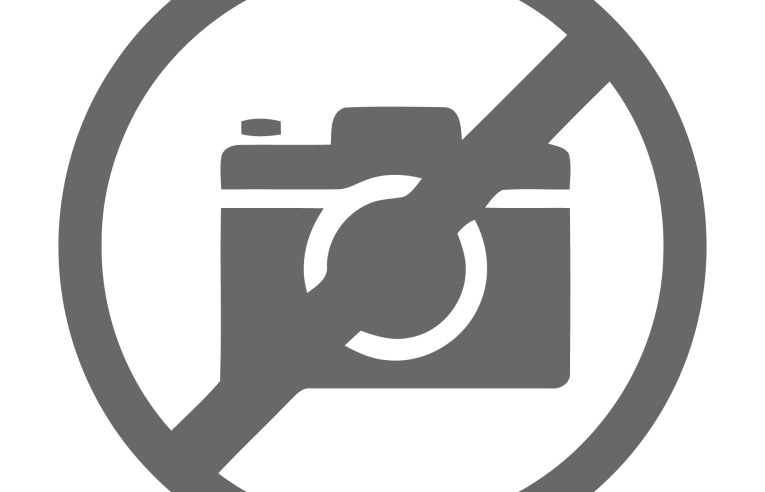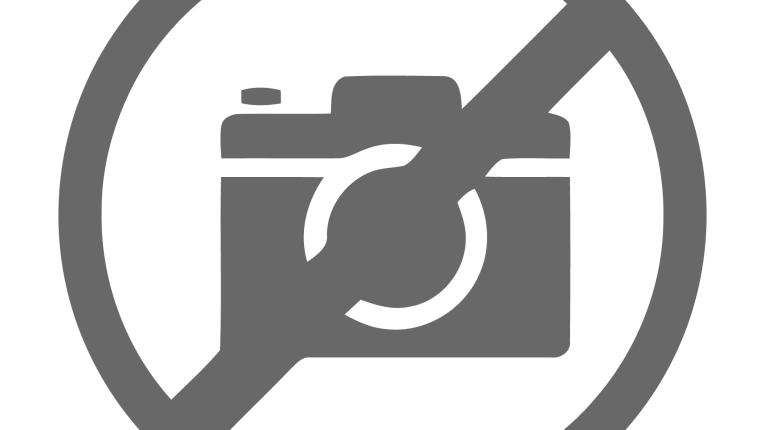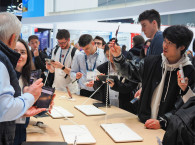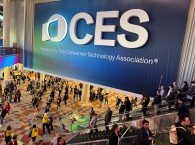While I browsed my notes and materials from CES 2023, it reinforced my first impressions that this year's Las Vegas, NV, show was a big wasted opportunity for the promotion of Bluetooth LE Audio (and yes, it was important at this stage!). Given that the new specification had been announced with so much fanfare during CES 2020, just before the COVID-19 pandemic locked down the world, the Bluetooth SIG should have promoted at least a recap event and gathered all the many technology partners at CES 2023 to reinforce the momentum and importance of the technology to the consumer electronics industry. In fact, the Bluetooth SIG should have had one of the biggest booths in the show floor - I'm certain that the CTA would have been able to accommodate that and throw in a good rate discount :)

Even from the few audiology companies I spoke to, Bluetooth LE Audio was something I had to bring to the conversation, even though the latest specification updates were written to respond to the requirements of the hearing-aid industry - and the result of a 10-year effort at that. Yet, at CES 2023, distracted by the OTC transition in the US market, the significant progress made in "smart" audio processing features, and the inevitable convergence with hearables and hearing augmentation in the consumer space, all the audiology companies were promoting upcoming products that had no references to Bluetooth LE Audio (even though, theoretically, those could be pushed with firmware updates in some cases).
There's an obvious reason for this apparent indifference. "The Chicken or the Egg" dilemma that always happens when a technology is thrown to the market by decree, and not as a result of natural market forces (which existed when those efforts originated). And in this case, the "chicken" is the mobile industry and the lack of smartphone support, which everyone agrees will be the key driver for mass-adoption of Bluetooth LE Audio in approximately two years.

Makes sense, even if in reality the features that they will be promoting in those implementations are not essentially new and will not be discerned by users, except maybe for Audio Sharing, which all Android users wish to have since Apple has long supported that use case thanks to AirPlay (which will always work better anyway). Auracast use cases don't depend upon the mobile and consumer electronics industries, but belong more in the commercial integration realm. It's essentially a big antenna/RF challenge to create Auracast-covered zones and those will need to be handled by companies with experience in critical installations for (highly regulated) public spaces. Very likely a hot topic for ISE 2025.
I am certain that the smartphone companies at MWC 2023 will be much more keen on promoting high-resolution audio (which Bluetooth LE Audio doesn't support), low latency for gaming Extended Reality, and of course, spatial audio - all features that require the adoption of optional codecs that (for now) are only supported using Bluetooth Classic (as we recently learned, efforts to enable other codecs as a vendor-specific solution in LE Audio are ongoing). For now, BLE Audio support will be mostly confined to specification bullet points since it's a "technical thing" and not yet a consumer driver.
Now with Bluetooth 5.4
And while I was trying to analyze the previews and predictions for MWC, suddenly the Bluetooth Special Interest Group (SIG) throws another unexpected curveball, which possibly explains why they didn't bother to do anything for CES 2023.

This mainly appeals to other applications than audio, but Bluetooth 5.4 brings features that will likely help expand applications in more markets. That's why the industry quickly responded with the usual suite of test, debug, and qualification tools for the new controllers. While these updates are directed at higher layer applications, PAwR will be attractive enough for the industry to support, given that it brings a welcome alternative to many overly complicated wireless alternatives over ZigBee, 6LoWPAN (Thread) and other IEEE 802.15.4 wireless protocols with mesh technologies. The likely implications for the smart home space will also be something at which many developers will be looking.
There's a major consequence from this update that needs to be considered from the marketing standpoint. Much like a Bluetooth 5.3 reference is now mandatory in products that are being sent to retail, version 5.4 of the Bluetooth Core Specification will also enforce the need to update the specifications in consumer products, independently of whether it is actually supported or even relevant. Look out for those headphones on Amazon or AliExpress to quickly include a Bluetooth 5.4 reference.
But going back to Bluetooth LE Audio adoption, at CES 2023 we already saw a Google Pixel 7 prototype phone being used as the source for the LE Audio demonstrations. Since what has been confirmed is that Android 13 natively supports Bluetooth LE Audio, MWC 2023 will be the first opportunity to discover when that support in hardware will be official. It will be also the first opportunity to check other smartphones from Chinese makers and Samsung - which might include the already-mentioned bundled earbuds.
According to the abundant Android websites that specialize in things that have not yet happened but have "leaked," the new Sony Xperia smartphones will be launching with Bluetooth LE Audio as well. For now, and given that Apple is not in a hurry to introduce Bluetooth LE Audio support (likely to happen discreetly in 2024), Bluetooth LE Audio will be a great flag to raise as a differentiator for Android-based designs, even if it doesn't represent any discernible benefit for consumers.
MobileConnect Assistive Listening
Whenever I recently discussed Bluetooth LE Audio with manufacturers, the most frequent example enthusiastically mentioned was always about Auracast and the fact that the technology enables broadcast audio channels streamed directly to wireless earbuds (which obviously everyone will be wearing in the future, it seems). This was curious since, from the frequent references to the fact that Bluetooth LE Audio would be an inclusive technology update - allowing manufacturers to replace old-fashioned induction loops with a modern version of hearing aids with Bluetooth - the pitch has now changed to the commercial possibilities of Auracast to stream audio channels in airport lounges, sports bars, etc.

To put some perspective on this type of application, one only needs to meet the many companies that for years have been installing and selling wireless guide systems, or GPS-triggered tour systems for museums, or assistive listening systems for classrooms (among many other examples). Those systems are now largely (and have been for some time) based on Wi-Fi technology. The main reason provided for the transition from dedicated wireless RF systems to Wi-Fi-based audio streaming being the fact that everyone already has a smartphone in their pocket, which can be quickly adapted to become a receiver, by simply downloading an app or just connecting to the local network.
One of the companies that has invested in this vision is Sennheiser, which has developed Wi-Fi solutions for mobile devices since 2015. Its MobileConnect systems for assistive listening were formally launched in 2017 and the company once again promoted an evolved system at the recent ISE 2023 show.


Named Audience Mic, the feature transforms any smartphone into a microphone, allowing MobileConnect users the ability to communicate with the room - something that is only possible because Wi-Fi is truly a wireless LAN and allows bidirectional communications. Audience Mic allows users to simply talk into their smartphones to have their voice brought directly to other participants’ phones in the room, over a room's loudspeaker and to those who may be participating remotely - which is a major use case in today's hybrid (in-person and remote) environments.
MobileConnect and Audience Mic features are something that clearly demonstrate much greater potential for Wi-Fi applications than Bluetooth Auracast will have. First, because using a smartphone connected to the local Wi-Fi is not something for the future. It's done today, precisely at the very same place where Auracast is touted as a remote possibility.
Yes, BLE audio is low power and can stream directly to TWS earbuds and modern hearing aids. But I bet those same users will already have a smartphone with them that enables precisely the same thing - and makes the whole process of identifying and selecting an audio channel much more user-friendly.
Wi-Fi infrastructure is well understood and increasingly robust (Wi-Fi 6E) for crowded environments and the coverage has precisely the radio frequency range that is required for such applications. Auracast will require stronger transmitters and antennas that simply don't yet exist and will likely struggle to coexist efficiently in public spaces. Wi-Fi solutions today have been tested in sports arenas and stadiums with thousands of video streams - not highly compressed audio streams.
Headphone 3.0
My third reflection on related topics results also from the demonstrations that happened at CES 2023 (largely behind closed doors, as mentioned in this newsletter in my CES report and by Andrew Bellavia in his dedicated report). What was being demonstrated in Sonical's suite in The Venetian during CES 2023 shows that the future of personal audio, hearables, and wireless audio transmission in general is not pending on Bluetooth LE Audio in any way.

I regretted the fact that I couldn't add much more about these demonstrations at CES 2023, and I would like to include some updates here. Apart from the evolution in the CosmOS front, there is an interesting hardware and RF component to what Sonical is doing, which is actually the result of a combined effort from Virscient, Segotia, Audio Codecs, and Antennaware, all of which are companies that Jonny McClintock is involved with. The potential for the combination is also demonstrated by robust wireless microphone solutions using Antennaware’s unique Bodywave RF antennas.
New Zealand-based Virscient are experts in the development of wireless audio and music solutions, and have strong partnerships and platforms to accelerate the development of these products. The company was instrumental in applications using advanced codecs from Qualcomm (aptX) over Bluetooth, high-quality wireless audio applications over Wi-Fi running on lightweight RTOS platforms or fully-integrated audio SoCs, among other fields of expertise.
Those demonstrations also involved another key partner ,which is Ireland-based Segotia, whose founders have been developing audio software technologies for many years, and more recently have focused on personal audio devices and headphones. Segotia developed expertise integrating advanced audio digital signal processing (DSP) solutions onto system-on-chip (SoC) platforms and is now exploring the potential for advanced audio front-ends integrating augmented listening algorithms, spatial audio rendering, and overall app development for Headphone 3.0 applications.

A key partner in these presentations is AntennaWare, a company that specializes in solving the body blocking problems normally associated with close range RF designs, offering solutions specifically designed to elevate wearable performance by extending range and drastically reducing dropout. Based in Northern Ireland, Antennaware has large expertise in 2.4GHz solutions for Bluetooth and is now exploring dramatic improvements with Ultra-Wideband (UWB) radios for wireless wearables. The new versions of Antennaware's antennas support both 5GHz, 6GHz, and 8GHz channels, dealing effectively with the issues surrounding UWB that have historically caused data dropouts. More importantly, Antennaware's Bodywave antennas provide up to 20dB of extra gain, strongly reducing audio glitches or data dropouts in critical connections.
During CES 2023, these companies have promoted a range of demonstrations with wireless transmission over UWB radios, allowing 24-bit/96kHz linear PCM (or higher) audio streaming for high-resolution audio applications, mono or 5.1 multichannel with a reverse voice back channel using the new Audio Codecs Skylark codec (more info here), and sub 10ms latency modes over Bluetooth LE Audio.
At CES 2023, Sonical demonstrated a growing ecosystem of plug-ins and apps for hearable devices to transition to Headphone 3.0. Sonical's CosmOS OS will enable third-party developers to create apps that can be downloaded onto the "ear computer" to improve music listening, add intelligent noise-cancelling, advanced hearing enhancements, health features such as a pulse oximeter, allow for more accurate motion tracking, and more.
CosmOS was running on production-ready hardware, demonstrating how to download and run apps directly on next generation processors. The "ear computer" that Sonical is developing will have multiple RISC-V processors on a single system on chip. These processors can be viewed as an array of computing elements able to execute individual apps downloaded from the cloud. Having multiple processors enables CosmOS to assign tasks efficiently to only the processors needed to run the task. The others remain dormant, to allow the lowest level of power consumption.
Partners such as Dolphin Design, an IP developer and subsidiary of Soitec, were also part of the CES 2023 demonstrations, and provide its Raptor convolutional neural network (CNN) accelerator, and Panther, its RISC-V based AI/DSP accelerator. These offer near-memory computing and parallel processing to bring superior energy efficiency.

From our conversation on the last day, I understood that for Sonical, these CES demonstrations were a pivotal moment to affirm the potential of the Headphone 3.0 concept, and the possibility to attract dozens of manufacturers. The goal is to allow users to select which features and apps they want to include in their new hearables products, in the same way one currently chooses which apps we want on our laptop or smartphone.
Also exciting about these demos was the realization of the efforts of these combined companies, showcasing that the future of wireless audio doesn't depend necessarily on Bluetooth LE Audio (or Bluetooth for that matter) and that other higher quality technologies for wireless audio are a possibility, with UWB showing the largest potential for personal audio.
Now, those very same demonstrations are heading to MWC 2023 in Barcelona and on to Embedded World in Nuremberg in mid-March, where Antennaware will again demonstrate its Bodywave antennas, designed into several modules including a Bluetooth Classic implementation over an IOT747 module, based on a Qualcomm QCC5171, and the Bluetooth LE Audio implementation from Virscient based on the Nordic nRF5340 SoC and audio development kit.
For those who wish to see demonstrations over UWB, Antennaware is offering working prototypes using a UWB radio module from Qorvo and evaluation kits from SPARK Microsystems, all of which show great potential in solving the core issues associated with body blocking for hearables and wearables. As I discussed with Jonny McClintock, the reason why everyone agrees that this development effort is worth doing has to do with the urgency of doing better in high quality wireless audio than Bluetooth currently allows. In fact, something that is already overdue. aX
This article was originally published in The Audio Voice newsletter, (#410), February 16, 2023.







